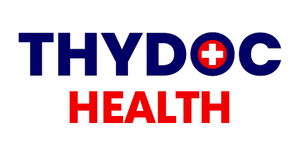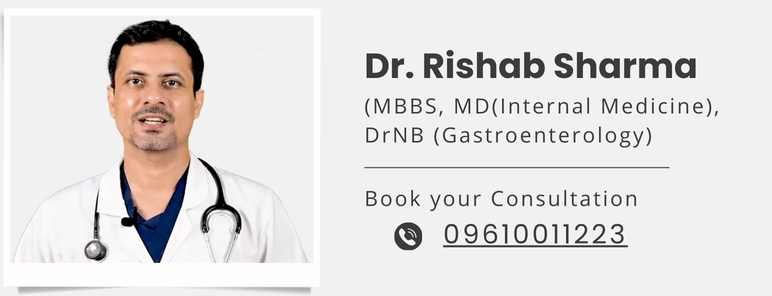By Dr. Rishab Sharma, MBBS, MD (Internal Medicine), DrNB (Gastroenterology)
Fatty liver disease is often silent in its early stages, making it a tricky condition to detect without regular check-ups. However, as fat begins to build up in the liver and the condition progresses, the body starts showing signs that something is wrong. Recognizing these symptoms early is crucial for preventing complications and maintaining good liver health.
In this article, we will explore the symptoms of fatty liver disease in detail, making it easier for you to identify potential red flags and seek timely medical advice.
Why Symptoms of Fatty Liver are Subtle in the Beginning
The liver is a highly resilient organ capable of functioning even when a large portion is damaged. This is why fatty liver disease often goes unnoticed until it reaches advanced stages or complications arise.
However, subtle changes in how you feel can be early indicators of a problem. Paying close attention to these signs can help detect fatty liver disease before it becomes severe.
Common Symptoms of Fatty Liver Disease
1. Persistent Fatigue and Weakness
Fatigue is one of the earliest and most common signs of fatty liver disease. It can feel like a constant lack of energy or mental fog that doesn’t go away, even after rest.
Why Does Fatigue Occur in Fatty Liver?
- The liver is responsible for metabolizing nutrients and detoxifying harmful substances in the blood. When fat accumulates in the liver, its efficiency decreases. This results in toxins remaining in the blood for longer, which can lead to fatigue.
- Inflammation caused by the buildup of fat can also make the body use more energy to fight off the damage, leaving you feeling drained.
How It Feels:
- You may feel sluggish throughout the day, even after sleeping well.
- You might struggle to concentrate on tasks or feel like your body is heavy and slow.
2. Discomfort or Pain in the Upper Right Abdomen
Pain in the upper right part of the abdomen, just below the ribcage, is another early symptom of fatty liver. The pain is typically dull and persistent rather than sharp or sudden.
Why Does This Pain Occur?
- The liver doesn’t have pain-sensitive nerves, but the capsule (a thin covering around the liver) does.
- As fat accumulates, the liver enlarges, stretching this capsule and causing discomfort.
How It Feels:
- The pain might feel like a constant ache, fullness, or mild tightness in the upper right side of your belly.
- It can become more noticeable after eating a large meal, as the liver works harder during digestion.
3. Unexplained Weight Changes
Weight changes are a common symptom, but they can vary:
- Weight Gain: Often linked to fatty liver caused by obesity or a sedentary lifestyle. The accumulation of fat in the liver is part of a larger issue of excess body fat.
- Weight Loss: Unintentional weight loss may occur in advanced stages due to liver dysfunction affecting nutrient absorption and energy storage.
Why Does This Happen?
- A dysfunctional liver can disrupt the body’s metabolism, leading to either excessive fat storage or loss of appetite and weight.
- The body’s inability to efficiently process nutrients can contribute to muscle wasting and fatigue, leading to noticeable weight loss.
4. Nausea or Loss of Appetite
Feeling nauseated or losing interest in food can be subtle signs of fatty liver disease, especially in its later stages.
Why Does Nausea Occur?
- A liver struggling to perform its functions can cause toxins to build up in the body, leading to a feeling of queasiness.
- An inflamed liver can interfere with digestion, making it harder to break down food efficiently.
How It Feels:
- You may feel nauseous throughout the day, especially after eating fatty or heavy meals.
- Even foods you previously enjoyed might seem unappealing, leading to a reduced appetite.
5. Swelling in the Abdomen (Ascites)
In advanced cases of liver disease, fluid accumulation in the abdomen, known as ascites, may occur. This symptom is more common in severe stages like cirrhosis.
Why Does This Happen?
- When the liver becomes scarred (fibrosis or cirrhosis), blood flow is disrupted. This increases pressure in the veins around the liver, causing fluid to leak into the abdominal cavity.
- Reduced production of proteins by the liver can also contribute to fluid retention.
How It Feels:
- Your abdomen may appear swollen and feel tight or heavy.
- You may notice that your clothes or belts feel tighter, even if your weight hasn’t increased significantly.
6. Jaundice (Yellowing of Skin and Eyes)
Jaundice is a clear sign that the liver is not functioning properly. It occurs mainly in cirrhosis of liver when the skin, eyes, and sometimes nails take on a yellowish tint.
Why Does Jaundice Occur?
- The liver processes bilirubin, a yellow substance formed when red blood cells are broken down.
- If the liver isn’t working efficiently, bilirubin builds up in the blood instead of being excreted through bile.
How It Feels and Appears:
- The yellowing is often first noticed in the whites of the eyes and then spreads to the skin.
- It may be accompanied by itchy skin, as bilirubin irritates the skin.
7. Swelling in Legs and Ankles (Edema)
Advanced cases of fatty liver disease can develop edema, which is swelling in the lower legs and ankles.
Why Does This Happen?
- A damaged liver produces fewer proteins, particularly albumin, which helps maintain fluid balance in the blood.
- Low levels of albumin cause fluid to leak into surrounding tissues, leading to swelling.
How It Feels and Looks:
- Swelling may feel tight or heavy, especially after long periods of standing or sitting.
- The skin over the swollen area may feel stretched and shiny.
8. Dark Urine and Pale Stools
Changes in the color of urine and stools are often subtle but important signs of liver dysfunction.
Why Does This Happen?
- Dark urine occurs when bilirubin builds up in the bloodstream and is excreted through the urine instead of bile.
- Pale or clay-colored stools indicate a lack of bile reaching the intestines, which is essential for digestion and stool pigmentation.
How It Appears:
- Urine may appear dark yellow or brown, even if you’re well-hydrated.
- Stools may look unusually light, chalky, or gray in color.
9. Mental Confusion and Difficulty Concentrating
In advanced stages, fatty liver disease can cause hepatic encephalopathy, where toxins affect brain function. This occurs when cirrhosis has developed in the patient.
Why Does This Happen?
- A poorly functioning liver cannot filter toxins effectively, allowing them to accumulate in the bloodstream and reach the brain.
- This can disrupt cognitive function and lead to symptoms like confusion and memory problems.
How It Feels:
- You might experience “brain fog,” making it hard to focus on tasks or recall information.
- Severe cases may lead to drowsiness or even altered consciousness.
Final Thoughts on Symptoms
Each of these symptoms, whether mild or severe, provides valuable clues about the state of your liver. However, symptoms like fatigue, abdominal discomfort, or weight changes may be mistaken for other conditions. This is why consulting a specialist, such as Dr. Rishab Sharma, is essential for early detection and treatment.
If you or someone you know is experiencing any of these symptoms, don’t ignore them. Reach out to a qualified specialist like Dr. Rishab Sharma, a trusted gastroenterologist in Jaipur, for a thorough evaluation and expert care.
Your liver is crucial for maintaining overall health, and recognizing these signs early can make all the difference in managing fatty liver disease effectively.

